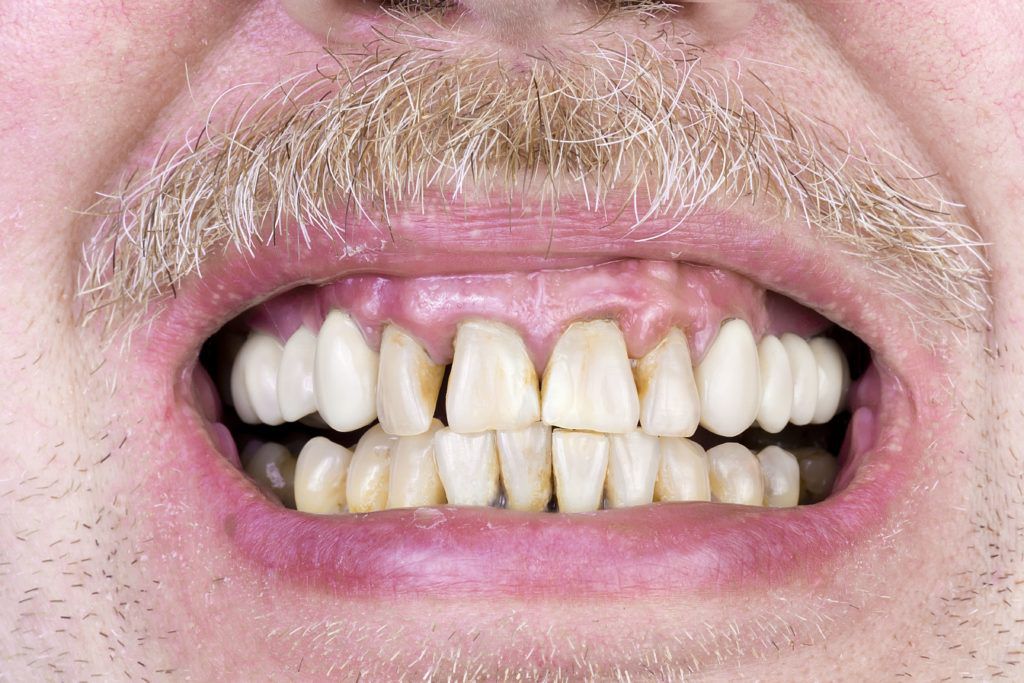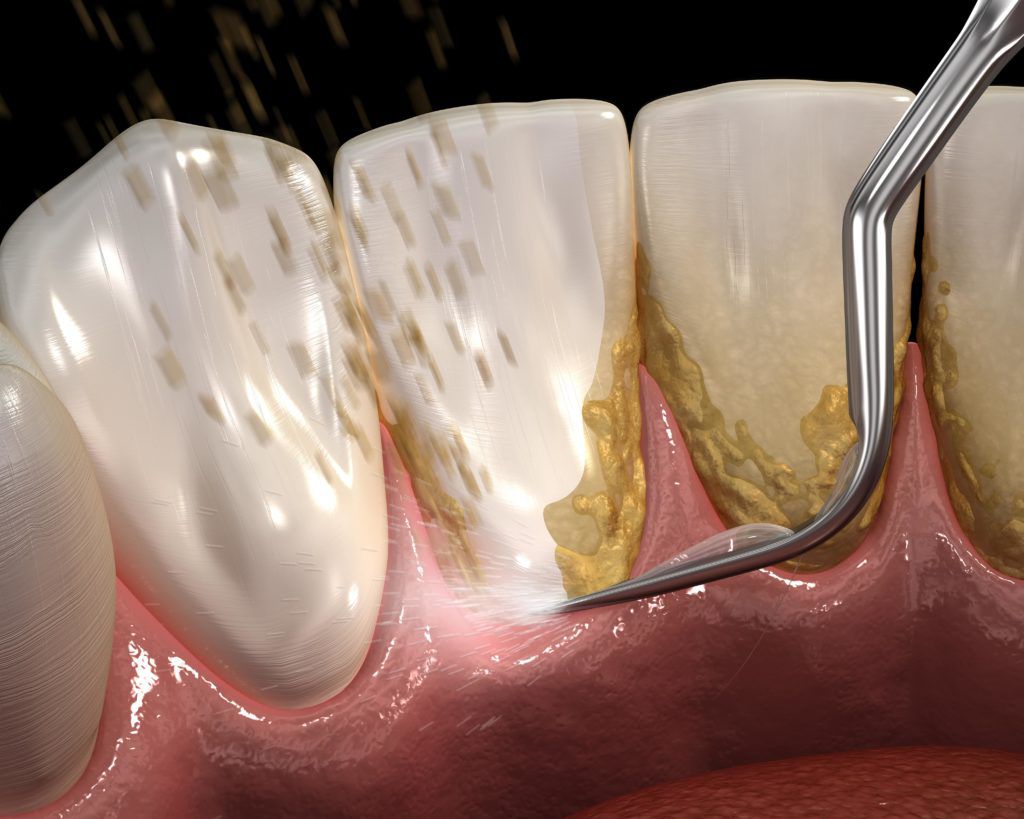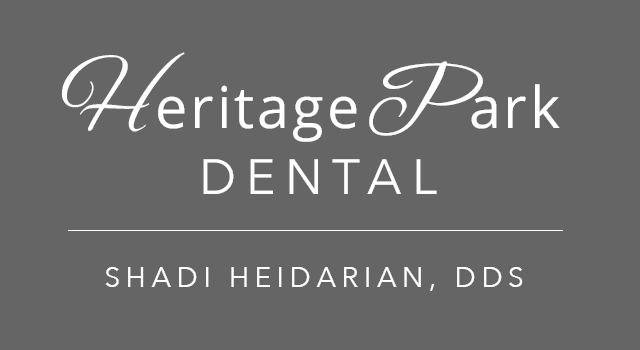Periodontal Disease
The word periodontal translates to “around the tooth”, thus periodontal disease occurs within the gums that support the teeth and can eventually affect the surrounding bone. There are two forms of periodontal disease: gingivitis and periodontitis. Gingivitis is characterized by gum inflammation and, if not treated, can eventually progress into periodontitis. Periodontitis is a more severe form of gum inflammation that causes the gum tissue to pull back, or recede from the teeth themselves.
Did You Know?
Periodontal disease often has no symptoms in the early stages and currently affects four out of every five people. It is estimated that as many as 64.7 million Americans over the age of 30 are affected.
Frequently Asked Questions:
Do I have periodontal disease?

You may have periodontal disease if you have any of the following:
- Bleeding gums – Gums should never bleed, even when you brush vigorously or use dental floss.
- Loose teeth – Also caused by bone loss or weakened periodontal fibers (fibers that support the tooth to the bone).
- New spacing between teeth – Caused by bone loss.
- Persistent bad breath – Caused by bacteria in the mouth.
- Pus around the teeth and gums – Sign that there is an infection present.
- Receding gums – Loss of gum around a tooth.
- Red and puffy gums – Gums should never be red or swollen.
If you think you may have periodontal disease, don’t wait–schedule a consultation with Dr. Shadi Heidarian of Heritage Park Dental today!
What is the difference between gingivitis and periodontitis?
Periodontal disease can be divided into two categories: gingivitis and periodontitis. Gingivitis is the early stage of gum disease, while periodontitis is the advanced stage of gum disease. While gingivitis can be reversed, once gum disease has progressed to periodontitis, it cannot be reversed.

With gingivitis, your gums are generally red, swollen, and bleed easily when you brush or floss. Most people with gingivitis do not experience any type of discomfort and may not be aware they have it. Once a better effort is made to reduce the amount of plaque on teeth through brushing and flossing, gingivitis symptoms generally improve.
If gingivitis is not treated, it can advance into periodontitis. Periodontitis has the same symptoms as gingivitis, but may also have additional symptoms such as tender gums, persistent bad breath, loose teeth, and receding gums. With periodontitis, the plaque and bacteria have spread below the gum line. Because of this, the condition cannot be reversed and will instead need to be managed with specialized cleanings.
There are four common forms of periodontitis. Chronic periodontitis is the most common form of periodontitis and is characterized by gum inflammation, pocket formation in the gums, and possible bone loss. Its progression is usually gradual, but can also occur more rapidly. Aggressive periodontitis usually occurs in people who are generally healthy and can be seen in families. It is characterized by rapid attachment loss and bone destruction. Periodontitis as the result of a system disease is attributed to conditions such as heart disease, respiratory disease, and diabetes. Finally, necrotizing periodontal disease is characterized by necrosis, or tissue death, of the gums, periodontal ligament, and alveolar bone. Necrotizing periodontal disease is generally seen in those with immunosuppressive conditions, such as cancer or HIV.
What causes periodontal disease?
Periodontal disease is most commonly caused by poor oral hygiene, but can also be caused by diabetes, smoking, aging, genetics, certain medical conditions, stress, poor nutrition, puberty or other hormonal changes like menopause or pregnancy, substance abuse, and immune system diseases such as cancer or HIV. Additionally, certain medications can cause gum disease by decreasing saliva flow or causing the abnormal growth of gum tissue.
How is periodontal disease diagnosed?
To diagnose periodontal disease, Dr. Heidarian will perform an oral examination of your gums. Specifically, she will use a periodontal probe to gently measure the space between your teeth and gums (gum pockets). Healthy gums should not bleed and should have a measurement of three millimeters or less. Infectected gums, on the other hand, will have varying degrees of larger gum pockets. She may also check your teeth for any signs of shifting, loosening, or sensitivity. Based on these findings, Dr. Heidarian will diagnose you with either gingivitis or periodontitis.
How is periodontal disease treated?
Gingivitis is treated through improving brushing and flossing techniques, as well as scheduling regular dental checkups and professional teeth cleanings. All these measures are intended to remove plaque from the teeth and reduce the amount of bacteria in the mouth. Addressing and managing gingivitis is the key method of preventing periodontitis.

Periodontitis is initially treated with a specialized periodontal cleaning called scaling and root planing. During this procedure, tartar, plaque, and bacteria are removed from above and below the gum line (scaling), as well as any rough spots on the tooth roots are smoothed out (planing). Removing the bacteria allows the gums to begin to heal, while smoothing out rough spots makes it harder for future plaque and tartar to adhere to the teeth. Scaling and root planing is generally performed one mouth quadrant at a time and requires the use of dental anesthetics to maintain your comfort.
In some cases where the periodontitis is especially advanced, periodontal surgery may be required. The exact type of periodontal surgery will depend upon the symptoms associated with advanced periodontitis. For example, excessively large gum pockets may require a gum graft, while loose or missing teeth may require bone grafts or dental implants.
How often will I need to visit Heritage Park Dental for periodontal services?
In most cases, you will need to visit Heritage Park Dental at least twice a year for periodontal services. Most of these services will simply be carried out during your routine dental checkups and professional teeth cleanings. However if you have an active or advanced case of gum disease, you may require specialized or more frequent periodontal cleanings.
How do I manage periodontal disease at home?
In between dental appointments, it is important to practice good oral hygiene at home. During your appointment, Dr. Heidarian will provide you with education on the proper brushing and flossing techniques. It is important that you implement these techniques at home with twice daily brushing and daily flossing. In some cases, a special mouthwash may also be recommended.
To boost your oral health with Periodontal dental services, schedule a consultation with Dr. Shadi Heidarian of Heritage Park Dental today! Heritage Park Dental serves Palo Alto and the surrounding communities.
